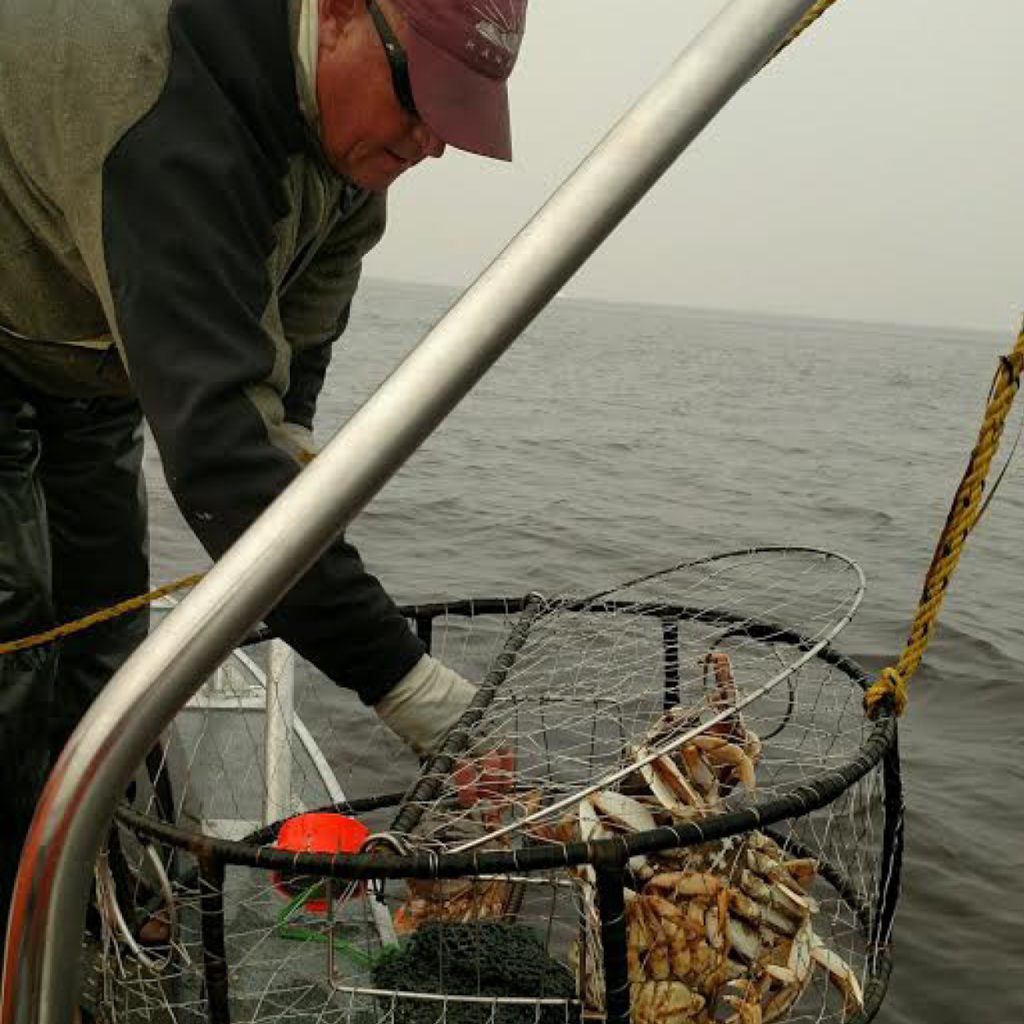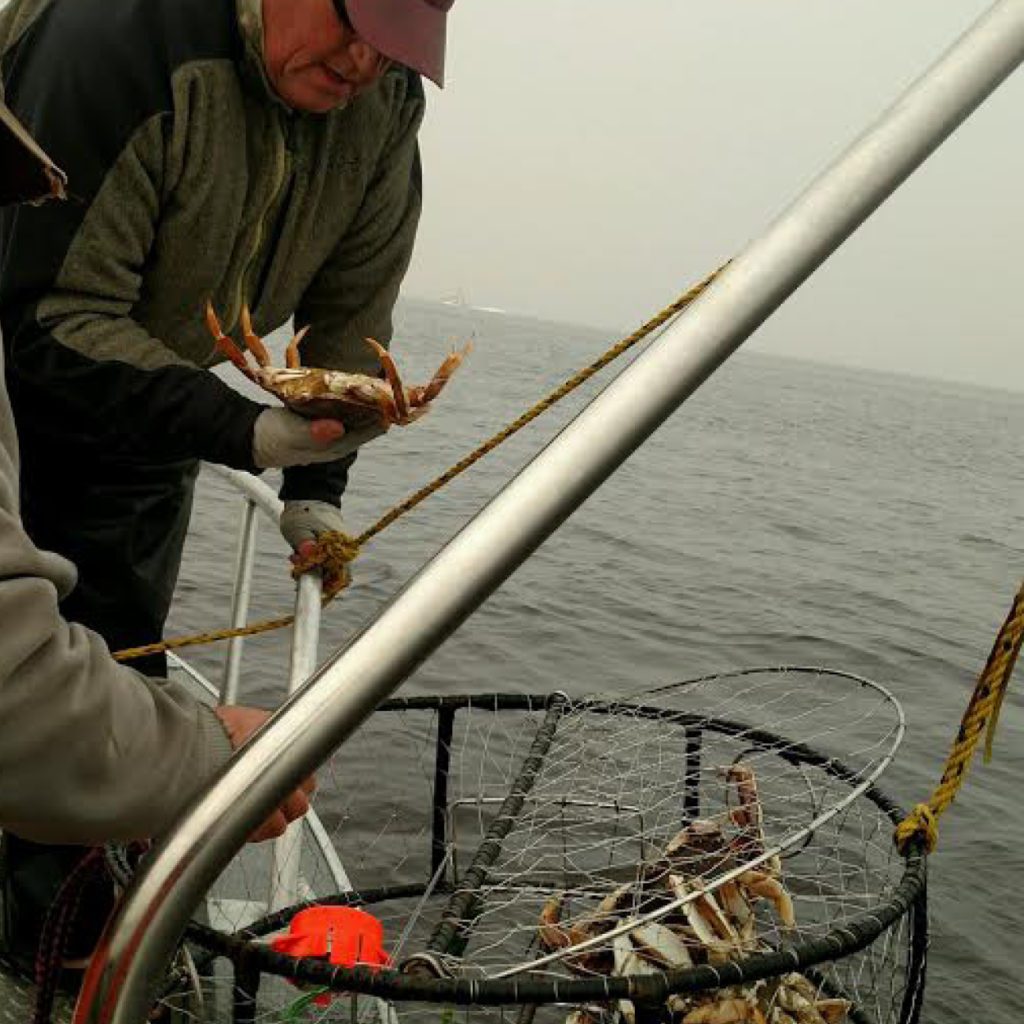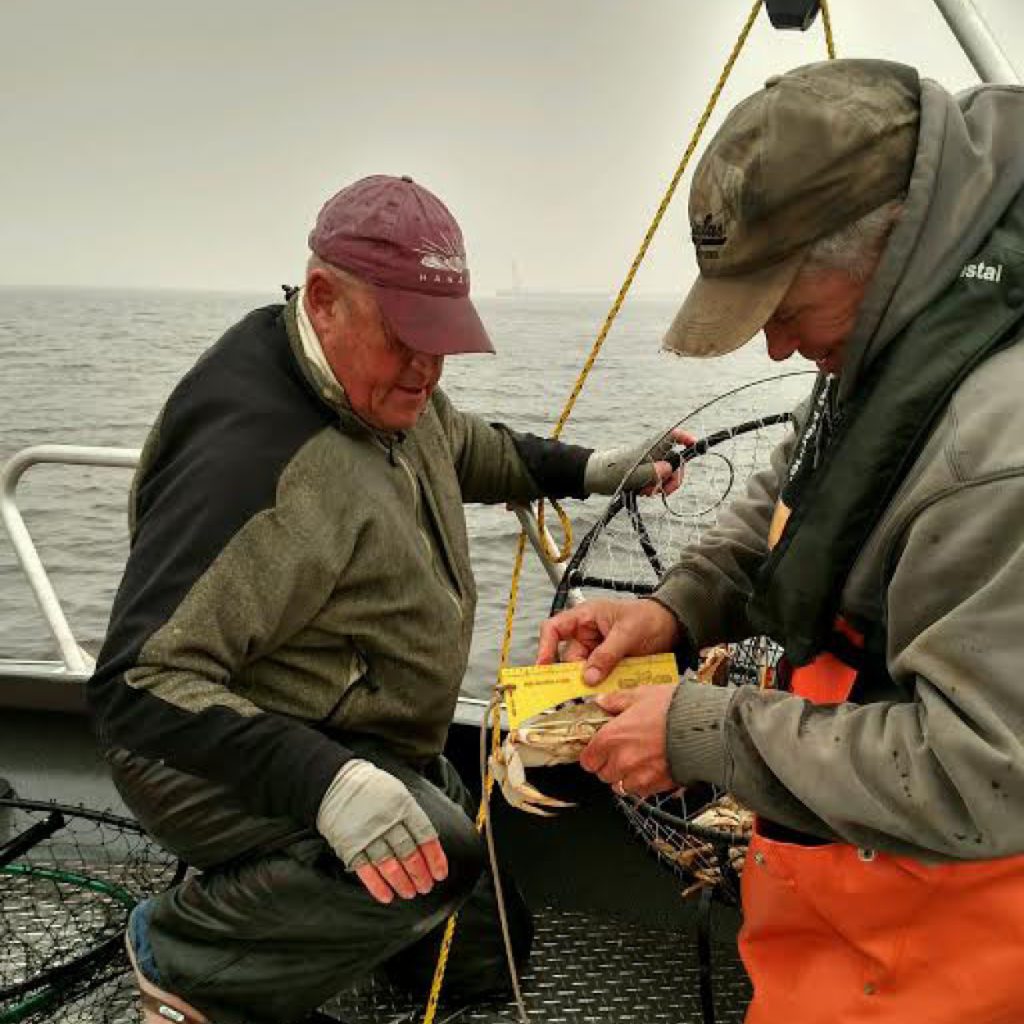Crabbing’s like a treasure hunt. You drop your traps, wait and manage the anticipation and excitement for what you hope to find is a trap filled with tasty crab. As you wait, hoping for success, you’re free to fish, chat, relax for a couple hours as your traps soak and draw crab from all directions. Then the moment of truth. The hunt for your buoys, snagging them with a boat hook and then pulling them aboard.
“The trap’s stuck”, one friend announced. I knew it wasn’t…it was full and it made me laugh. I’d heard that one before and it was a welcome problem.
“You’ll need a hand pulling that one in”.
With two on the rope the trap comes up slowly out of 30’ of saltwater until it becomes visible…stuffed crab and confirmed by the “hoorahs” of the entire crew.
It’s widely known that crabbing in the Northwest is best in the months that end in “R”. Will you get in on the bounty? Oregon is arguably one of the best states in the country to go crabbing.
Home to tasty and plentiful Dungeness crab, the management of Oregon’s crab stocks has been a model of success. Only males over the minimum size requirement of 5-3/4” can be retained. In Washington they need to be a minimum of 6” as measured across the back.


The best months to go crabbing are September – November. It’s productive, easy and fun!
Oregon seasons are less constrained than Washington’s with year around opportunities in all Oregon’s bays. There’s an ocean closure from October 16th– November 30th but outside that it’s wide open.
Anytime you’re fishing, crabbing, clamming or harvesting wildlife in the northwest be sure to check the regulations and double check to make sure you’re compliant. For example, you’ll need a shellfish license in either state to crab.
Crab can be caught from shore or boat. Generally, a boat gives you the best opportunity to rack up full limits. Oregon’s been pretty generous in that regard allowing 12 per person in all waters.
Maybe the most attractive feature of catching crab is how easy it is. Anybody can do it.
From a boat you’ll need some traps (up to 3 per person in Oregon), at least 50’ of leaded nylon rope, 2 buoys attached to the end of the rope and in Oregon those buoys need to be visibly marked (use an indelible pen) with your name and/or phone number or address and some kind of bait bag or cage. Whether you’re crabbing from the boat or the bank you’ll need a crab gauge to measure them. Ours’ have a small float on them…just in case they take a dive into the drink. A boat hook is always a good tool to have when you run to pick-up your traps.
There’s quite a bit of discussion on what constitutes the best bait. It’s really a matter of personal preference. I like chicken thighs, some use salmon carcasses, others shad or tuna and more recently there are canned options like Crustacean Sensation that fit neatly into plastic holders and save some of the mess associated with other baits.
Once the bait’s in the trap and you’re ready to begin tossing them into the briny depths, you’ll need to find a spot. 20’ to 30’ of water is ideal. In places like the Columbia, west of Hammond is best. Be sure to keep your traps out of the navigation channel. Generally, the closer you are to the ocean the better, so you’re well-advised to set your traps accordingly and not way up the bay.
Names like “Crab Harbor” (Tillamook Bay) are a sure tip-off of an area to try.
Timing’s everything. Most will target the last hour of the incoming tide, through the high slack (flood) and pull them when the tide starts to run out. Knowing where you are in the tide is essential. “Soft tides”, tides that have a minimal exchange between high and low tide, will allow you soak your traps longer or crab throughout the entire day while steep tides require you tend your traps carefully. Otherwise you may lose them or have them buried by the strong tidal currents.
The more you do it the better you’ll get at picking your spots but when you get the right timing the catches can be epic!
There’s an art to deploying your traps too.
The objective is to not get the trap’s buoy rope around your prop. You can easily assure this doesn’t happen by positioning your boat in whatever current or wind will carry you away from your traps. Throw the trap’s buoys from the bow, feed out the trap rope until it’s all out, then pitch the trap, all the while drifting away from the buoys as the rope lays out in front of your boat off the bow and nowhere near the transom where your prop resides.


Only male crab can be retained so check and double check to make sure you’re not keeping female crab.
Crabbers that pile the rope on top of the trap and toss the whole thing out are begging for trouble. It works, sometimes, flawlessly, but when it doesn’t the trap goes down right along with a ball of rope and buoys, lost to the sea. If you spend a minute longer and let the current and patience do its work you’ll successfully drop your traps every time.
With your traps deployed…now you wait.
Years ago I thought using crab rings was a good idea as a diversion while I let my traps soak. I’d drop the rings and wait 20 or 30 minutes and pull them, often landing only a few, maybe three or four crab at a whack. It wasn’t very gratifying. What I learned is rings work great but you have to let them soak too. When we’d let them soak for an hour our fortunes changed. So yes, rings are a great diversion but they need time too.
For me, 3 hours is an ideal soak time for my traps. Some prefer less others more. In most spots in Oregon and on the lower Columbia in the estuary, three hours will get you what you need. On a few crab excursions in Southeast Alaska my friends would let their traps soak for several days. Sometimes it paid off, most the time it didn’t. Here in the northwest we’re really fortunate to have such a robust fishery that allows for the kind of consistent success we seem to find most weeks out of the year in such a short period of time.
In Oregon, and the same is true for Washington, most any bay with direct access to the Pacific is an excellent choice. Salinity is the key. If there’s a river raging through it and lots of fresh water don’t expect to find it loaded withcrab.
Even with 6 rivers and some sloughs emptying into Tillamook Bay it can be an incredibly productive crabbing destination. “Crab Harbor” is close to the mouth of Tillamook Bay and gets plenty of ocean water to draw crab into the bay and ultimately to your traps. The same can be said for Yaquina Bay and others that have sizeable rivers that dump into these bays. Again, the closer you crab to the ocean, this doesn’t mean between the jetties but in the bay, the better.
Another useful tip that will attract more crab to your traps is where you position them. In most cases the places you’ll be crabbing run east to west. Running your trap line north to south is generally a sound strategy. Leave plenty of distance between your traps, 100’ is ample. As the tide washes in and out your traps will be sending out a wall of scent. Conversely, if you position your traps east to west you’ll find (as a rule) one trap is loaded and the others aren’t. This is because instead of a scent wall you’ve created a scent line. Try it and see what you think.
Also, always wear your PFD. If you’re wearing an inflatable PFD be sure the pull tab that manually deploys your vest is neatly tucked up into the vest…still accessible, but out of the way. More than once this tab’s gotten caught in a trap, unbeknownst to the wearer, only to result in a surprise inflation when they stand-up or move away from the trap. I’ve seen it myself and it’s good for a laugh until you have to plink down $20 or more for a new cartridge.
You can also crab from shore. There are inexpensive snares available. You cast them with a rod and reel, just add some bait to the cage and let ‘er fly! You can feel the crab in the trap and you just reel it in. Others will throw traps or rings from piers…that works too. Some of the larger bays have rental operations where you can rent a boat, crab traps, buy bait, everything you need to be successful. You have options if you don’t own a boat.
Now’s the time to get out, it will get better with each passing month. Again, check the regulations before going out and be sure you leave plenty of wiggle-room in your timing ahead of the tide. More than anything…have


A crab gauge for measuring is essential equipment when crabbing.